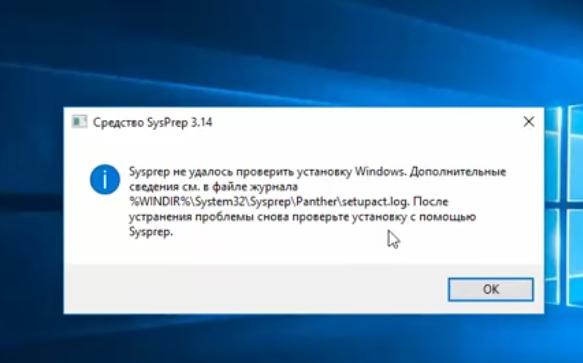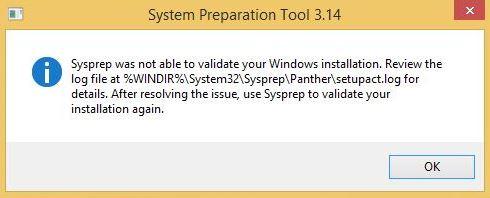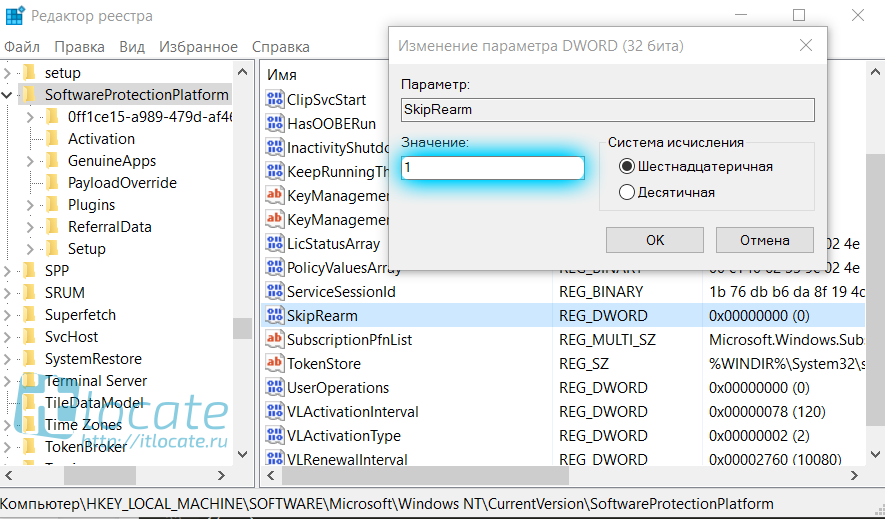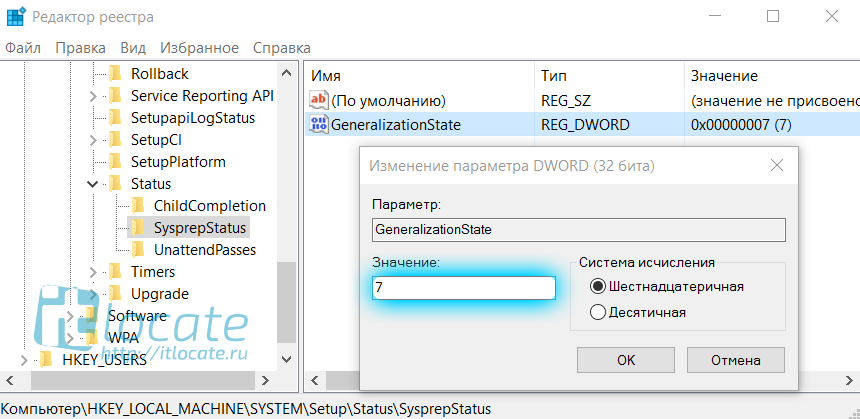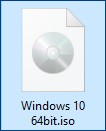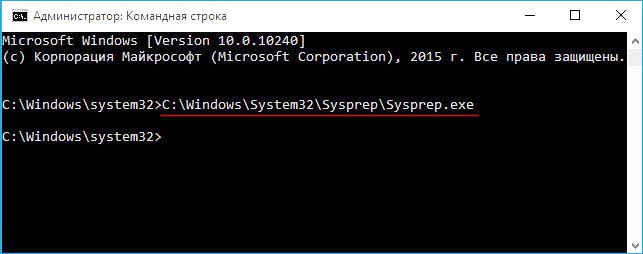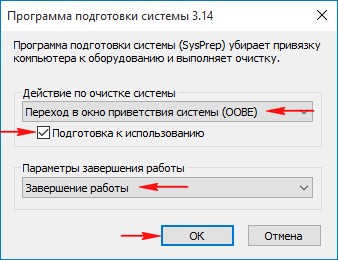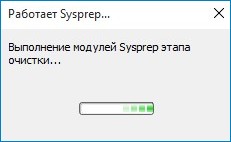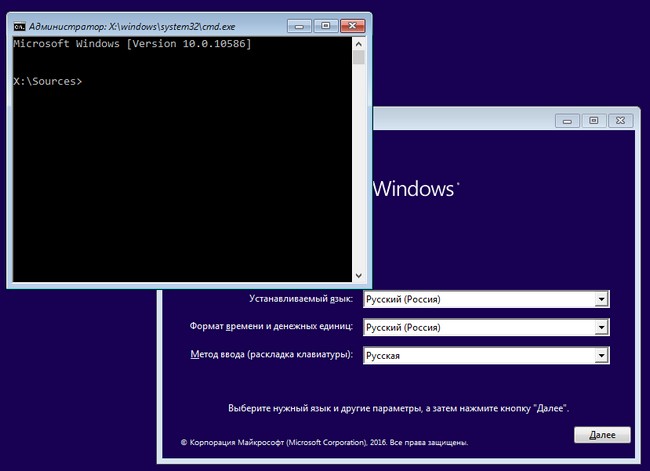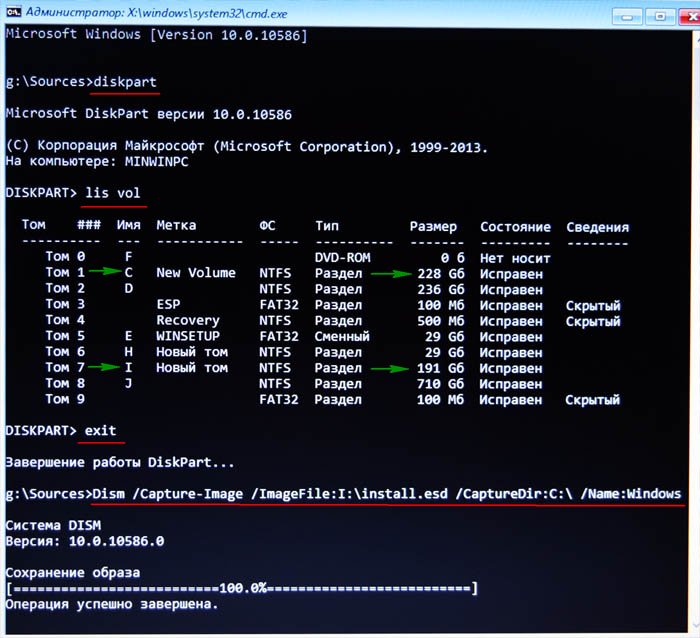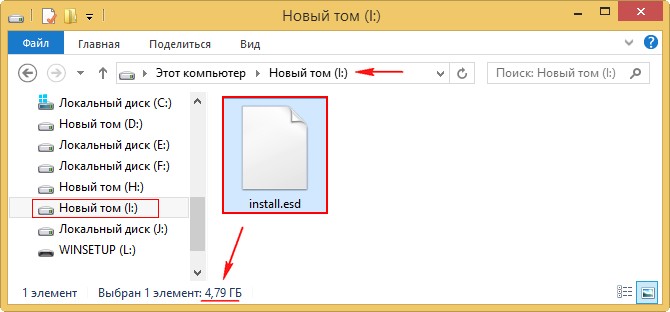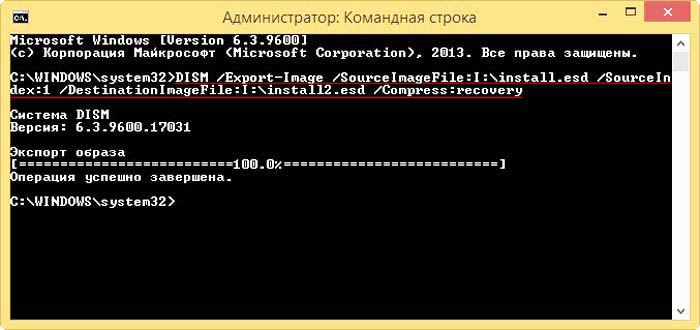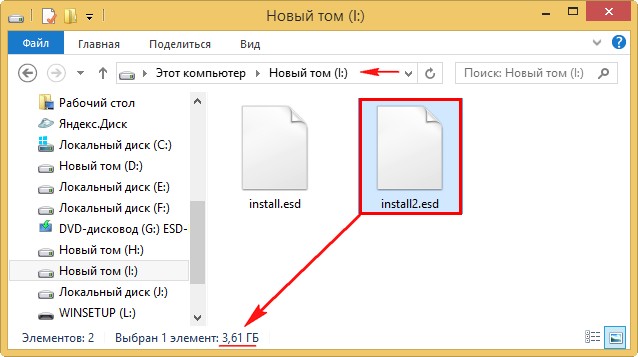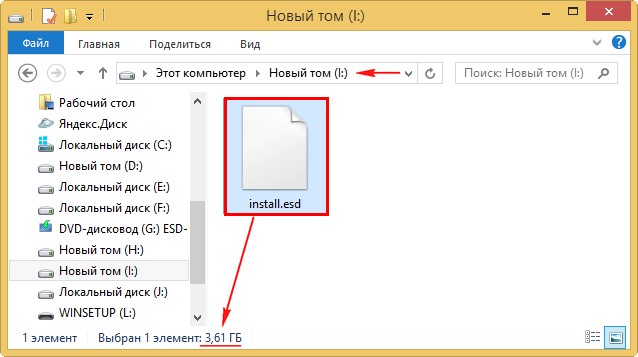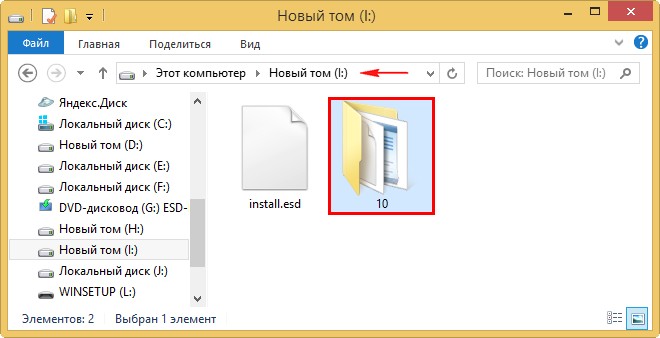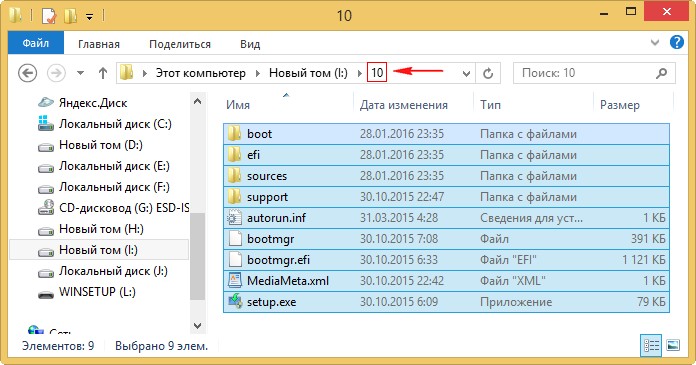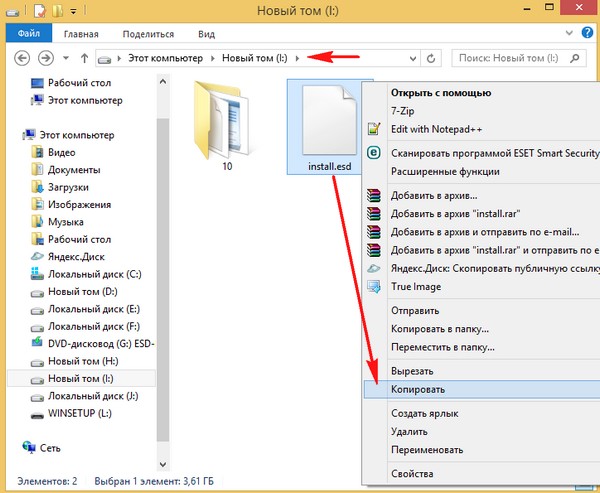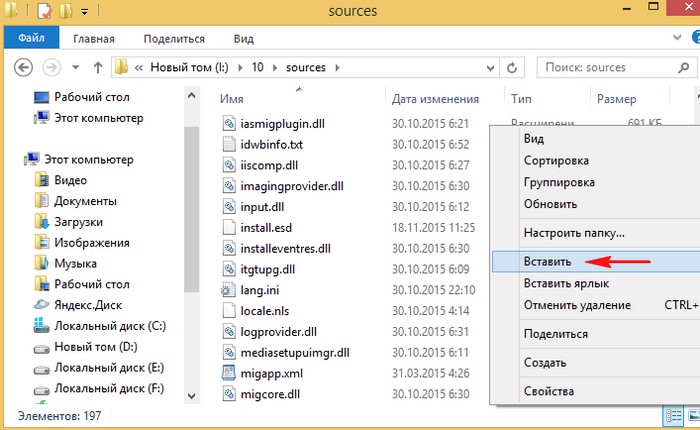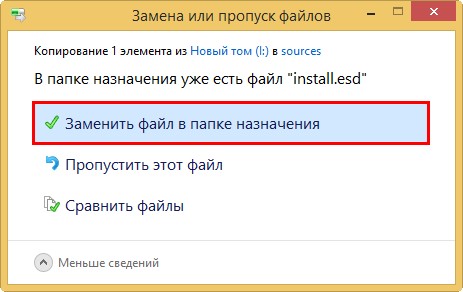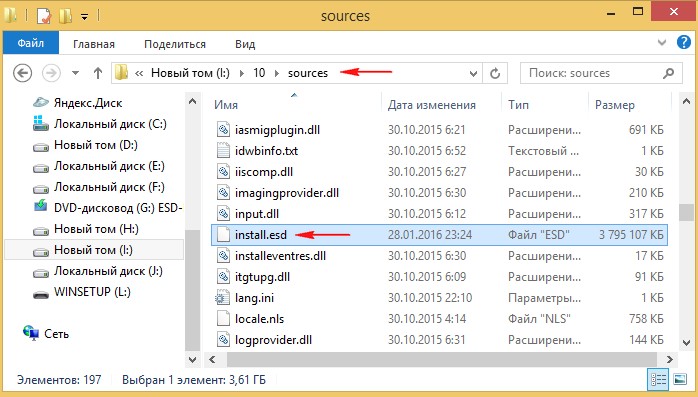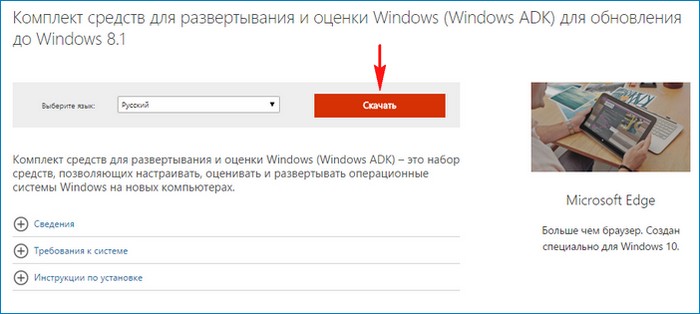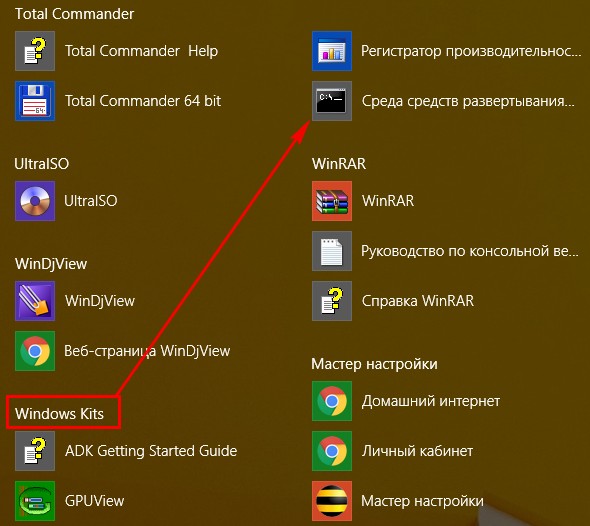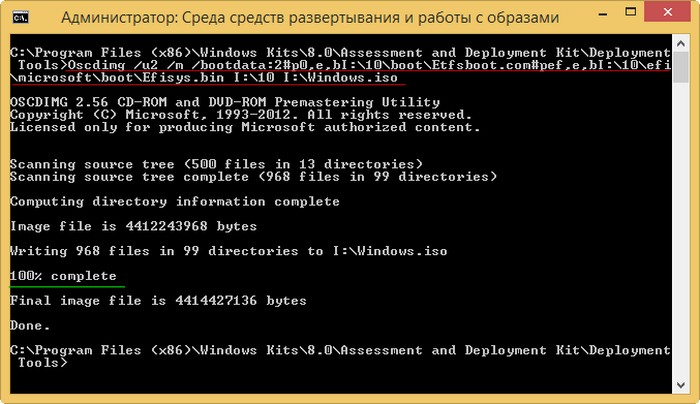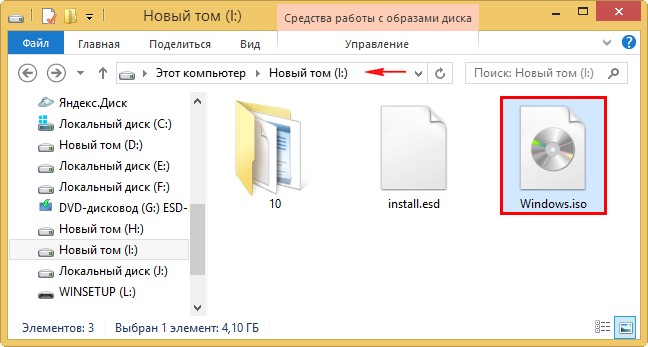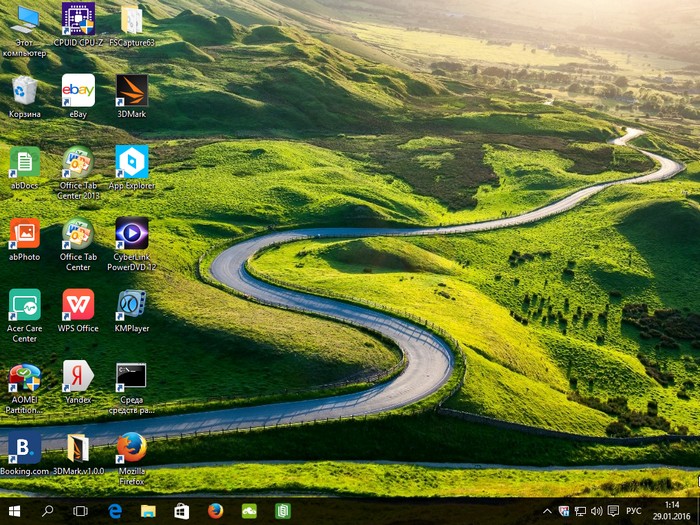как установить sysprep windows 10
Как запустить SysPrep после апгрейда Windows
Столкнулся со странной ошибкой при попытке выполнить SysPrep на уже установленной системе, которую планировались использовать для создания эталонного образа для развертывания Windows 10 средствами System Center Configuration Manager 2012 R2. При запуске SysPrep неожиданно появляется ошибка:
В английской версии Windows 10 ошибка аналогичная:
Откроем и проанализируем ошибки в файле журнала утилиты Sysprep setupact.log. В глаза сразу бросается следующая строка:
Т.е. ошибка явно сообщает, что запрещено выполнять Sysprep на системах, которые были обновлены с предыдущей версии Windows. В нашем случае это как раз так: одна система была получена путем апгрейда с Windows 7 до Windows 10, вторая через обновление с Windows 8.1. И действительно, согласно статье в базе знаний KB828287: Microsoft не поддерживает использование Sysprep для создания образов для инсталляций Windows, которые были обновлены через режим апгрейда (установка SP при этом не считается апгрейдом). Windows разрешает выполнять только sysprep на системах, полученных в результате «чистой установки». Неужели в таком случае придется переустанавливать систему с нуля?
Мне удалось найти более простое решение. С помощью Process Monitor с фильтром для процесса sysprep.exe и сравнения чистой и «обновленной» Windows 10 удалось получить список ключей реестра, которые проверяются Sysprep при запуске на предмет определения чистая ли эта система или «обновленная». Итак, что нужно сделать, чтобы сбросить маркер «обновленной» системы для Windows 10, который проверяется утилитой Sysprep (для других версий ОС все аналогично):
Совет. В случае с Windows 10, чтобы SysPrep заработал, дополнительно пришлось удалить все нестандартные Modern приложения, которые индивидуально (не в режиме provision) были установлены из Microsoft Store пользователями системы.
Это можно сделать, удалив все профили пользователей (если применимо), полностью удалив все Metro приложения для всех пользователей (не рекомендуемы способ), либо удалив такие приложения вручную. Последний вариант реализуется так:
Sysprep. Сброс системы под новое железо
Оглавление
Что такое Sysprep
Sysprep это стандартная программа для подготовки настроенной системы для переноса на новое железо, убирает любые идентифицирующие данные устройств и удаляет все драйвера комплектующих вместе с системным журналом. В итоге после её применения мы получаем новую, чистую систему, но со своими старыми файлами и настройками. Программа появилась на борту системы уже в Windows NT 4.0 (1996 год).
Для чего нужен Sysprep?
Sysprep нужен для создания различных образов и сборок windows для последующего развёртывания на клиентских компьютерах, для развёртывания/клонирования виртуальных машин или если вы собираетесь полностью обновить железо на своём компьютере.
Установка Sysprep
Данная утилита не поставляется как отдельное программное обеспечение, а идёт сразу вместе с установленной ОС Windwows и её можно найти в каталоге sysprep:
Запуск Sysprep
Программу необходимо запускать от имени Администратора и желательно из под учётной записи Администратора. Для запуска программы перейдём в каталог программы, выполнив WIN + R команду:
После запуска программы мы увидим следующее диалоговое окно:
Переход в окно приветствия системы (OOBE) означает что после завершения сброса при следующем запуске появится настройка первого запуска, где мы будем указывать имя пользователя, давать имя своему компьютеру и т.д, а галочка напротив параметра Подготовка к использованию поможет нам сбросить активацию Windows.
При развертывании Windows распространенной практикой является настройка параметров первого запуска компьютеров, на которых выполняется развертывание. Эту процедуру также называют OOBE.
Параметры завершения работы дают нам выбор:
После выбора всех параметров запускаем очистку sysprep OK
Sysprep ошибка
Произошла неустранимая ошибка при выполнении sysprep
Такая ошибка появляется в том случае, если срабатывает ограничение на количество запусков. По умолчанию в Sysprep заложено ограничение на 3 запуска. Но выход есть, обратимся к реестру WIN + R
И меняем значения параметра SkipRearm на 1 или 0. После этого проблема должна уйти.
Ещё бывает, что собьётся другая настройка, но это реже случается. Переходим по ветке в реестре:
И у параметра GeneralizationState выставляем значение 7. И, если есть, у параметра CleanupState выставляем значение 2
Если уже и это не помогло, то запускаем Командную строку от имени Администратора и выполняем последовательно следующие две команды:
Тем самым мы перезапустим службу координатора распределенных транзакций MSDTC. И после этого для верности перезапустите машину. После этого ошибка должна уйти 100%
Sysprep не удалось проверить установку Windows
Иногда возникает ошибка проверки установки Windows. Для решения этой ошибки мы переходим в каталог:
И открываем на редактирование файл setupact.log. Этот файл представляет собой журнал программы sysprep. И смотрим что за ошибку мы поймали.
Отключение BitLocker
В этом случае для устранения ошибки нам нужно отключить BitLocker (это понятно из самой ошибки, если просто прочитать её). Чаше всего проблема возникает на ноутбуках с Windows 10, которые используют шифрование InstantGo. Чтобы отключить BitLocker запускаем Командную строку от имени Администратора и выполняем следующую команду:
Не удается удалить современные приложения у текущего пользователя
Такая ошибка появляется, когда вы устанавливали приложение из Windows Store или криво его удалили 🙂 Удалим через PowerShell командой:
Заключение
Вот собственно и всё, не знаю что ещё написать по такой небольшой, но очень полезной утилите. Надеюсь я вам помог, спасибо что заглянули 😉
Sysprep Windows 10: Deploying Windows 10 Using Sysprep
Businesses need to replicate similar configurations of the Windows OS for hundreds and even thousands of employees. This can be done by creating a Windows image of a customized installation and deploying it across multiple PCs. But before cloning a Windows installation, any unique identifiers, such as the system ID (SID), must be removed. This is done through the Windows System Preparation Tool, or Sysprep.
Learn how to use Sysprep to deploy multiple Windows 10 desktops and virtual machines the smart way.
What Is Sysprep in Windows 10 Used for?

Therefore, before deploying a Windows image on another computer, it must undergo a process called generalization. Generalization means removing any computer-specific information from the image before deploying it to other computers. And that is exactly what you use Sysprep in Windows 10 for. Sysprep is Microsoft’s utility for generalizing a Windows image so that it can be used by multiple PCs simultaneously. It removes SIDs and other PC-specific information and driver cache to create a generic Windows OS image that can be deployed across thousands of PCs. It also enables generating new SIDs and other characteristics so that the Windows image can function on other PCs.
By deploying a single generic image, administrators can save time and conveniently set up and maintain thousands of PCs with similar configurations, business-specific applications and necessary drivers. They can also test the configurations for all employees whenever changes are made through a privileged audit mode. All in all, it can reduce the cost of providing technical support significantly and simplify ongoing maintenance for the IT department.
What Are the Limitations of Windows 10 Sysprep?
Before running Sysprep for Windows 10 installation, you must consider certain limitations. For instance, you can use only the version of Sysprep that comes with the Windows version that needs to be cloned for generalization. And if you upgraded your Windows OS to a newer version, you won’t be able to use Sysprep. Here are some other limitations that the administrators must be aware of:
Finally, administrators must ensure strong passwords for all user accounts. Running Sysprep on a PC with a weak password may disable the user from logging in again.
How Do You Use Sysprep to Create Generic Windows Images?
You can create a generic Windows image through audit mode or through unattend files. You can configure Windows to boot to audit mode instead of the default Out-of-Box-Experience (OOBE). Audit mode enables you to customize the Windows configurations as per the company’s requirements and capture an image to deploy across other computers in the company.
Here’s a step-by-step guide on how to create a generic Windows image using the Sysprep tool:
However, if you had closed the System Preparation Tool window, you can reopen it through the command prompt by typing
Alternatively, you can run:
This will generalize and shut down without having to open the window. You can use the /mode:vm option for generalizing a Virtual Hard Drive (VHD) to be deployed on the same Virtual Machine (VM) or hypervisor.
You can now capture your image with DISM. Test the image extensively before deploying it to reference computers.
You can also generalize the image using attend files by adding a few settings:
When your Windows Setup processes the unattend file, it will generalize the installation.
After deploying the generic image to a destination computer, the SID and other erased identifiers must be provided for the OS to function. You can use an answer file to configure unattended Windows Setup settings automatically. An answer file is a list of components and settings that the computer applies to the system when configuration passes run. By using an answer file with the Sysprep command, the computer will automatically enter the computer name, SID, IP address and other necessary parameters specified in the answer file when the Windows image runs for the very first time. You can use the Sysprep / unattend : file_name > command for specifying a different answer file.
What Are the Advantages and Disadvantages of Using Sysprep?
Using Sysprep to create generic Windows 10 images has its own benefits and disadvantages. Capturing a customized Windows 10 image and deploying it across all devices in an organization can reduce the workload on the IT department considerably. You do not have to configure Windows settings and install security updates separately for each device.
Using answer files with Sysprep can make re-entering the generalized information much faster and easier. Once the Windows image is deployed and boots for the first time, the computer will read and enter the specified information automatically. You can also update the Windows image as needed by changing the configurations and using the deployment tool.
Apart from the limitations discussed earlier, using Sysprep has some other disadvantages as well. For instance, the size of the Windows image is considerably larger than the original Windows 10 installation. You will also have to update the drivers and other programs on the Windows image as newer versions come out.
Simplifying Deployment of Guest Virtual Machines Through Parallels RAS Templates
Parallels ® Remote Application Server (RAS) makes it extremely convenient to create Remote Application Server templates to deploy across a large number of virtual machines. Using Parallels RAS templates for Virtual Desktop Infrastructure (VDIs) or Remote Desktop Session Hosts (RDSH), administrators can set up as many guest virtual machines as they need—easily and on the go. All you have to do is prepare the virtual machine by installing Parallels RAS Guest Agent and perform the following steps:
You now have a template. You can also choose to test the newly created template through automated VM testing and VM deployment.
Experience how fast and simple it is to deploy similar setups on-demand, multiple times by downloading a 30-day trial of Parallels RAS.
Создание собственного настроенного дистрибутива Windows 10. Способ для опытных пользователей
После создания загрузочной флешки с Win 10, запускаем встроенную в систему утилиту «sysprep», разработанную специально для подготовки настроенного образа Windows вместе с установленными программами к переносу на другой компьютер. Запускаем командную строку от имени администратора и вводим команду:
открывается командная строка, ввожу команды:
Включаю стационарный компьютер, подсоединяю к нему жёсткий диск USB.
Итого, на переносном винчестере USB (диск I:) находится один файл install.esd размером 3,5 Гб.
ISO-образ Windows 10
После того, как файлы копировались, заходим на диск (I:) и копируем файл install.esd.
Заходим в папку I: \10\sources, щёлкаем правой мышью и выбираем Вставить.
Выбираем Заменить файл в папке назначения.
Оригинальный файл install.esd из дистрибутива Windows 10 заменён нашим файлом install.esd.
Комплект средств для развертывания Windows (Windows ADK)
Друзья, теперь нам осталось превратить папку 10 с файлами Windows 10 в установочный ISO-дистрибутив.
Если Вы опытный пользователь, то наверняка на вашем компьютере установлен Комплект средств для развертывания Windows (Windows ADK), если нет, то скачайте его по ссылке и установите
После установки запускаем среду средств развёртывания и работы с образами.
Дистрибутив Windows.iso на диске I: готов.
Создание загрузочной флешки
Предлагаю создать загрузочную флешку Windows 10 программой WinSetupFromUSB, с помощью неё можно создать универсальную флешку, с помощью которой получится установить Windows 10 на новый ноутбук с БИОСом UEFI, а также на простой компьютер с обычным БИОС. Подробно на этом останавливаться мне бы не хотелось, всё очень хорошо описано в этой статье.
Если у вас всего один компьютер, то вы можете поступить так.
Устанавливаете в операционную систему виртуальную машину, затем инсталлируете в неё Windows 10 со всеми программами, подключаете второй виртуальный диск и используете его для сохранения файла-образа Win 10.
Потом просто подключаете виртуальный диск к «хостовой» операционной системе и копируете из него файл-образ Win 10.
Статьи по этой теме:
Комментарии (138)
Рекламный блок
Подпишитесь на рассылку
Навигация
Облако тегов
Архив статей
Сейчас обсуждаем
Сергей Николаевич
Здравствуйте! Если установить В 11 Энтерпрайз (90дн) и В-11 понравится, то, как установить 11-ю для
Фёдор
Цитата: Гость Евгений Только сейчас заметил странную опечатку: не Ubook, а Ebook у меня. Ну
admin
Это на винде и так есть, а нужно, так и монитор можно хороший купить, но никак не по таким конским
admin
Гость Владимир
Вот есть винда, есть макос, есть ios, но почему же элементарные приложения ios не могут работать на
О проекте RemontCompa.ru
RemontCompa — сайт с огромнейшей базой материалов по работе с компьютером и операционной системой Windows. Наш проект создан в 2010 году, мы стояли у истоков современной истории Windows. У нас на сайте вы найдёте материалы по работе с Windows начиная с XP. Мы держим руку на пульсе событий в эволюции Windows, рассказываем о всех важных моментах в жизни операционной системы. Мы стабильно выпускаем мануалы по работе с Windows, делимся советами и секретами. Также у нас содержится множество материалов по аппаратной части работы с компьютером. И мы регулярно публикуем материалы о комплектации ПК, чтобы каждый смог сам собрать свой идеальный компьютер.
Наш сайт – прекрасная находкой для тех, кто хочет основательно разобраться в компьютере и Windows, повысить свой уровень пользователя до опытного или профи.
Sysprep (Generalize) a Windows installation
Before you can deploy a Windows image to new PCs, you have to first generalize the image. Generalizing the image removes computer-specific information such as installed drivers and the computer security identifier (SID). You can either use Sysprep by itself or Sysprep with an unattend answer file to generalize your image and make it ready for deployment.
Generalize a Windows installation
On a generalized Windows image, Windows Setup processes settings in the generalize configuration pass.
Even if you’re capturing an image that’s going to be deployed to a PC with similar hardware, you still have to generalize the Windows installation to remove unique PC-specific information from a Windows installation, which allows you to safely reuse your image.
When you generalize an image, Windows replaces the computer SID only on the operating system volume where you ran Sysprep. If a single computer has multiple operating systems, you must run Sysprep on each operating system individually.
Prevent Sysprep from removing installed devices
When you set up a Windows PC, Windows Setup configures all detected devices. Generalizing a Windows installation uninstalls these configured devices, but doesn’t remove device drivers from the PC.
If you’re deploying an image to computers that have identical hardware and devices as the original PC, you can keep devices installed on the computer during system generalization by using an unattend file with Microsoft-Windows-PnpSysprep | PersistAllDeviceInstalls set to true. For more information about Sysprep-related Windows unattend components, see the Unattended Windows Setup Reference for Microsoft-Windows-PnpSysprep.
Limits on how many times you can run Sysprep
You can run Sysprep command up to 1001 times on a single Windows image. After running Sysprep 1001 times, you must recreate your Windows image. Refer the following table:
| Operating System Version | Sysprep Count Limit |
|---|---|
| Windows 8.1 and Windows Server 2012 or later | 1001 |
| Windows 7 and Windows Server 2008 R2 | 3 |
| Windows Server 2008 | 3 |
In previous versions of Windows, you could use the SkipRearm answer file setting to reset the Windows Product Activation clock when running Sysprep. If you are using a volume licensing key or a retail product key, you don’t have to use SkipRearm because Windows is automatically activated.
Microsoft Store apps
Installing new Microsoft Store apps or updating your existing Microsoft Store apps before generalizing a Windows image will cause Sysprep to fail. Sysprep /generalize requires that all apps are provisioned for all users; however, when you update an app from the Microsoft Store, that app becomes tied to the logged in user account. The following error appears in the Sysprep log files (which you can find at %WINDIR%\System32\Sysprep\Panther ):
Instead of using the Microsoft Store to update your apps, you should sideload updates to your line-of-business apps, provision offline-licensed Microsoft Store for Business apps for all users, or have end-users update their apps by using the Microsoft Store on their destination PCs. If Microsoft Store access in a managed environment is disabled by an IT administrator, end-users will not be able to update the Microsoft Store apps.
For more information about sideloading line-of-business Microsoft Store apps, see Sideload Apps with DISM and Customize the Start Screen.
Generalize an image
Generalize from Audit Mode
To generalize an image, you have to first boot into Audit Mode. You can boot into Audit Mode using an unattend file or from the Out-Of-Box Experience (OOBE) screen. You can read about the different ways of booting into Audit Mode at Boot Windows to Audit Mode or OOBE.
Boot a PC into Audit Mode. When Windows boots into Audit Mode, System Preparation Tool will appear on the desktop. You can choose to either close the System Preparation Tool window or allow it to remain open.
Customize Windows by adding drivers, changing settings, and installing programs. Don’t install any Microsoft Store apps using the Microsoft Store.
If the System Preparation Tool window is still open, click Generalize, click Shutdown, and then click OK to generalize the image and shut down the PC.
Run Sysprep from Command Prompt. Run %WINDIR%\system32\sysprep\sysprep.exe to open the System Preparation Window. You can also use the Sysprep command together with the /generalize, /shutdown, and /oobe options. See Sysprep command-line options to see available options.
If you are generalizing a VHD that will be deployed as a VHD on the same virtual machine or hypervisor, use the /mode:vm option with the Sysprep command-line.
The computer generalizes the image and shuts down.
After the computer shuts down, capture your image with DISM.
Deploy this image to a reference computer. When the reference computer boots, it displays the OOBE screen.
Generalize using unattend
If you use multiple unattend files during your computer deployment, you can add the following settings to your each of your unattend files so Windows Setup will generalize the PC after processing the unattend file.
